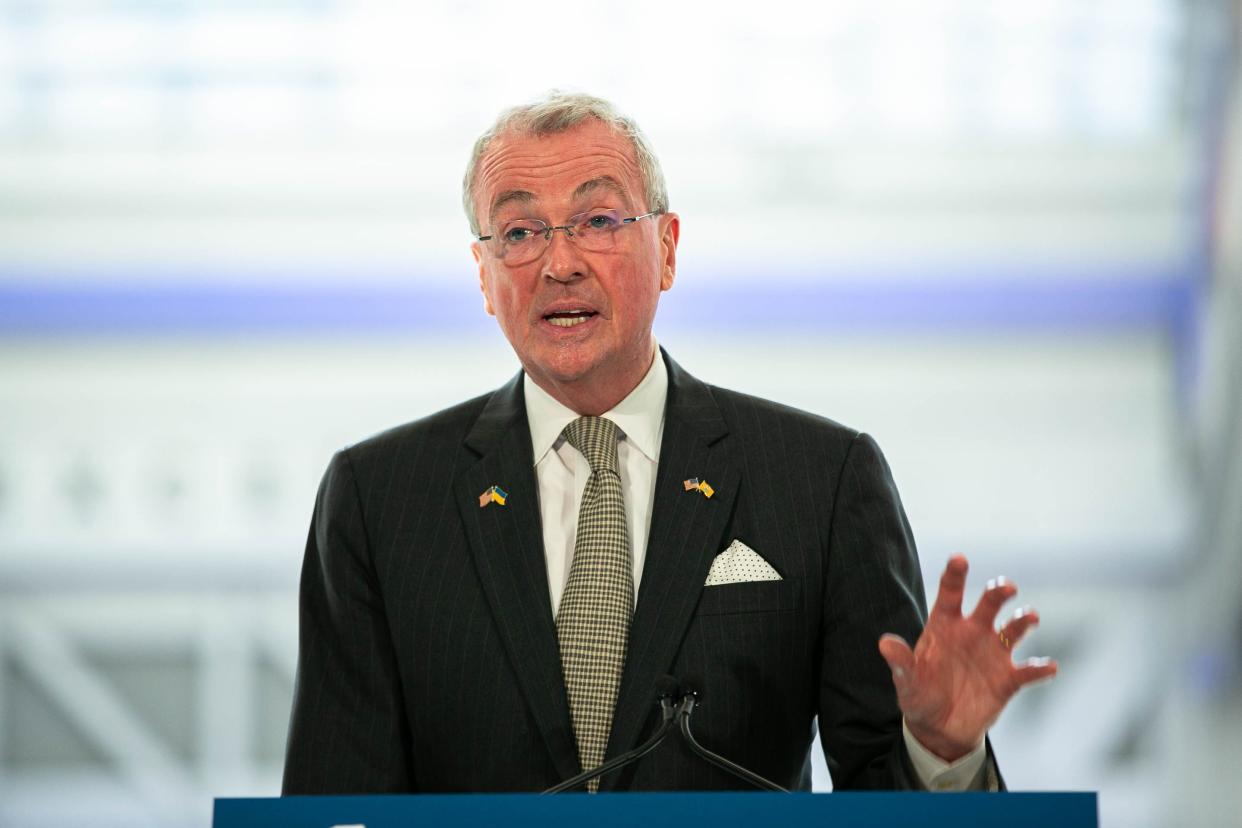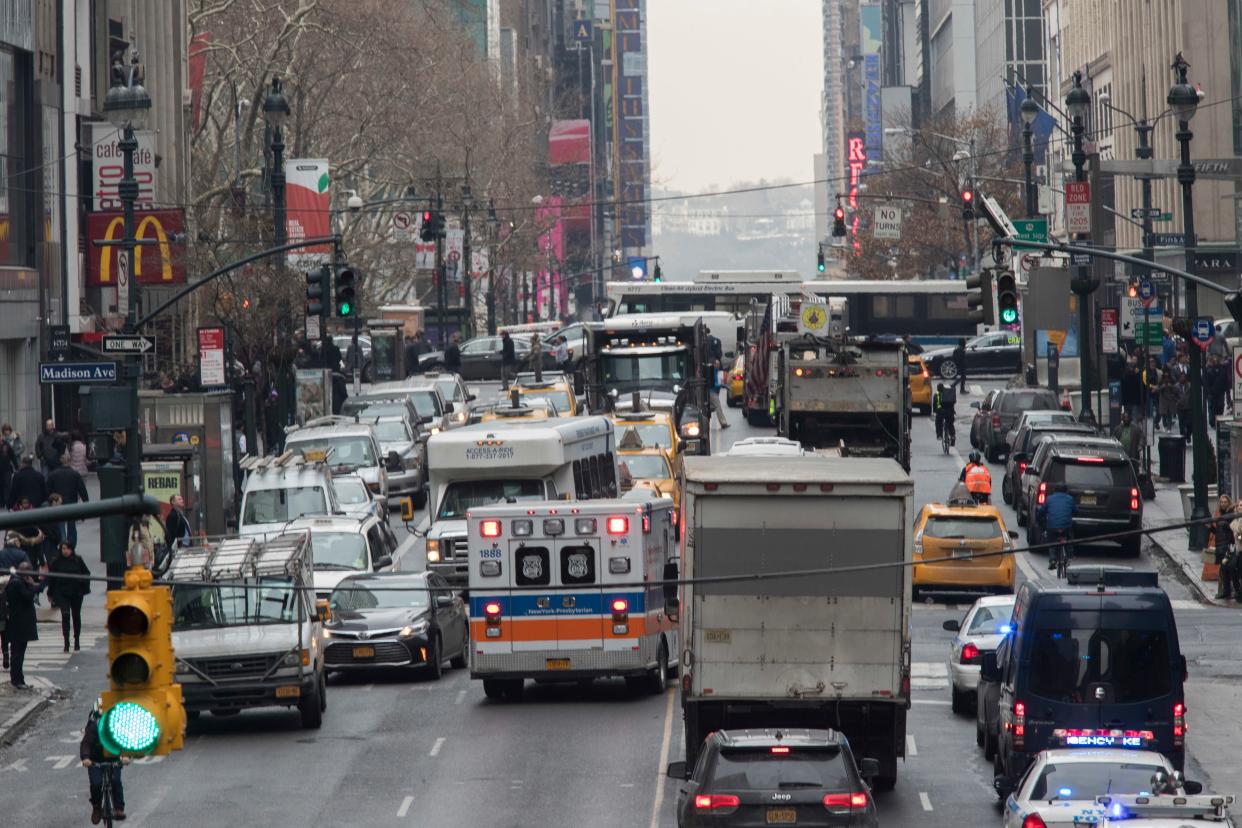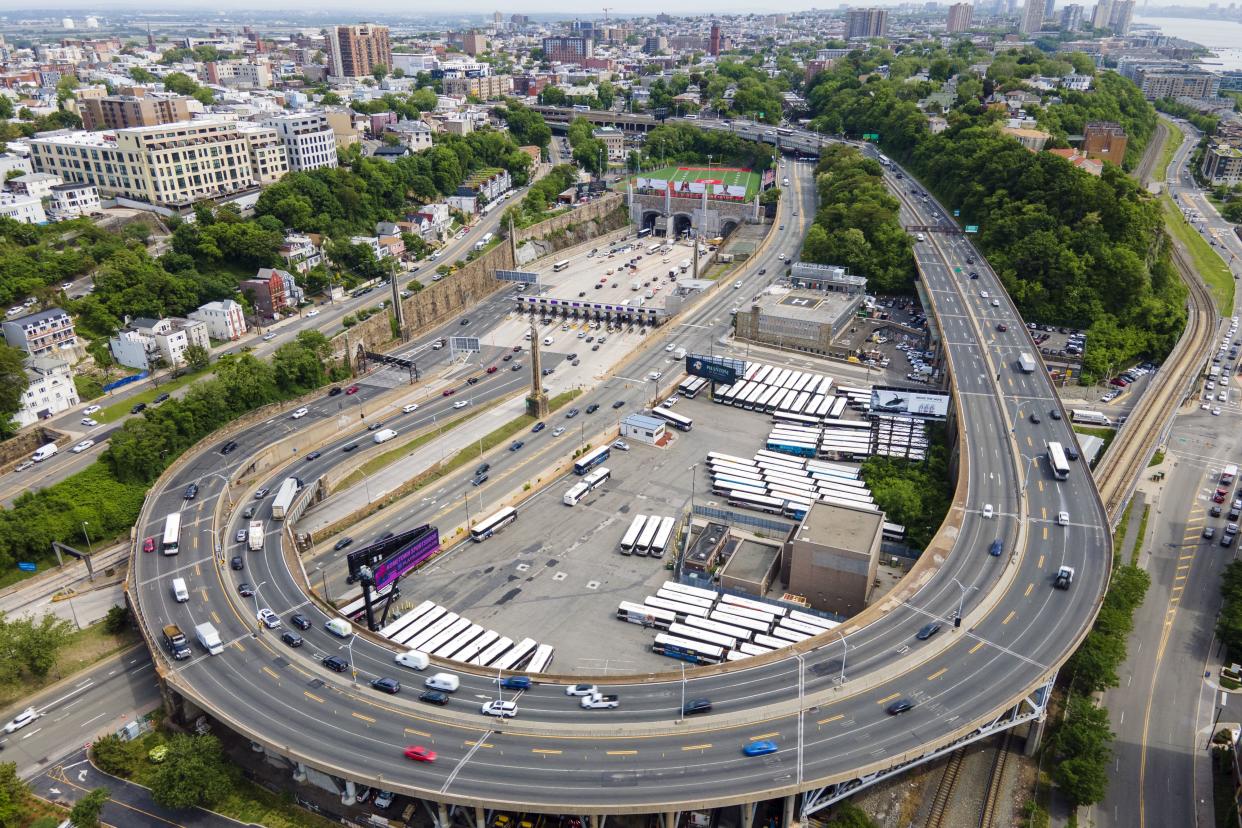N.J. Gov. Murphy launches campaign against congestion pricing in Manhattan with overblown claims
As New York officials move forward with the state’s plan to launch congestion pricing in Manhattan, New Jersey Gov. Phil Murphy has turned to overblown claims in his effort to kill the program.
New Jersey E-ZPass holders on Saturday received a text notification claiming the plan — which aims to toll motorists who drive south of 60th St. — “will increase cost and congestion for NJ drivers.”
The message was accompanied by another notice on the Garden State’s E-ZPass website, which further claimed the tolls will charge drivers “in excess of $23 for entering Manhattan south of 59th Street” and “could significantly increase commuter costs, overburden our public transit systems, and cause congestion in North Jersey communities.”

New Jersey Gov. Phil Murphy speaks at a press conference announcing the expansion of Penn Station at the Moynihan Train Hall in Manhattan, New York, on Thursday, June 9, 2022. (Shawn Inglima/)
A spokeswoman for Murphy on Monday said the governor’s office was aware the notice would be disseminated through New Jersey’s E-ZPass database, which is overseen by the state’s Turnpike Authority.
The messages rely on some of the most extreme scenarios for congestion pricing laid out by the Metropolitan Transportation Authority in the program’s federal environmental assessment published earlier this month.
The environmental assessment estimates the tolls would cause less than a 0.2% increase in traffic in New Jersey, and does not show any significant increase in congestion in New Jersey.
And the $23 price for tolls would only be necessary if exemptions or discounts were given to a large number of vehicles — like those coming from New Jersey. MTA officials have warned any exemption would lead to pricier tolls for all other drivers because a state law passed in 2019 requires to program generate at least $1 billion in annual revenue to pay for mass transit upgrades.

FILE - In this Jan. 11, 2018, file photo, an ambulance is seen driving in the wrong lane to get around traffic on 42nd Street in New York. (Mary Altaffer/)
A senior New York State government source questioned the competency of whoever wrote the message sent to New Jersey’s E-ZPass customers, and pointed out the notification misidentified the northern edge of the congestion zone as 59th St. instead of 60th St.
“Is some sloppy political operative writing New Jersey’s E-ZPass messages now?” the source asked.
Murphy during a news conference in Atlantic City on Monday defended the notifications, and blamed his predecessor Chris Christie for underfunding New Jersey’s mass transit infrastructure, making it harder to convince drivers to switch to trains and buses to avoid paying the tolls.
“We are not realistically in a position right now where you can easily take someone off the road, convince them with new tunnels built or new bus terminals built that their alternative is compelling,” said Murphy. “Maybe it [congestion pricing] is a good idea, but it’s an idea whose time has not come.”

In this aerial image taken with a drone, vehicles move in and out of the Lincoln Tunnel, coming and going between New York City and Weehawken, N.J., on Thursday, May 26, 2022. (Ted Shaffrey/)
More than 80% of people who commute from the Garden State into the congestion zone do so via mass transit, according to the MTA’s environmental assessment.
Across the Hudson River, New York officials have taken less extreme tactics in their congestion pricing messaging.
“The Central Business District Tolling Program would reduce traffic and help improve the transit system by tolling vehicles that enter or remain in Manhattan’s CBD,” said a message sent to New York E-ZPass customers earlier in August. “Read the Environmental Assessment starting August 10, 2022 and give us your feedback through September 9.”
New York officials said they did not want to politicize the approval process for congestion pricing because they’re still working with the Federal Highway Administration on the program’s environmental review.
